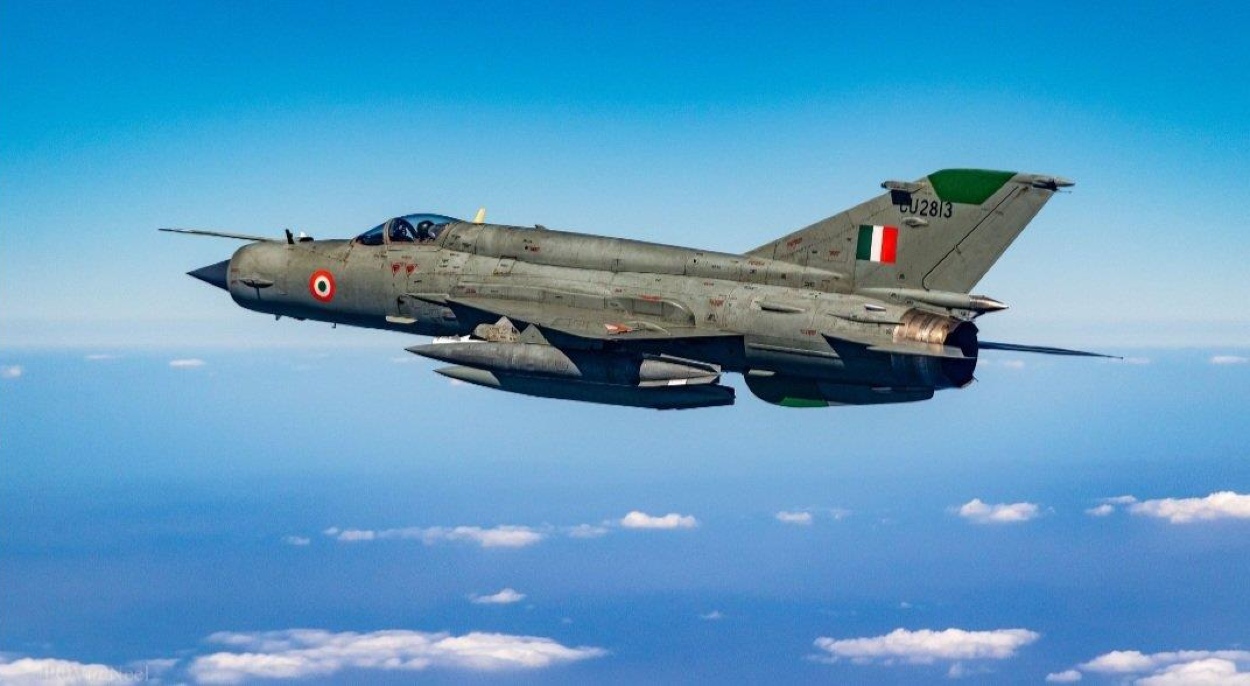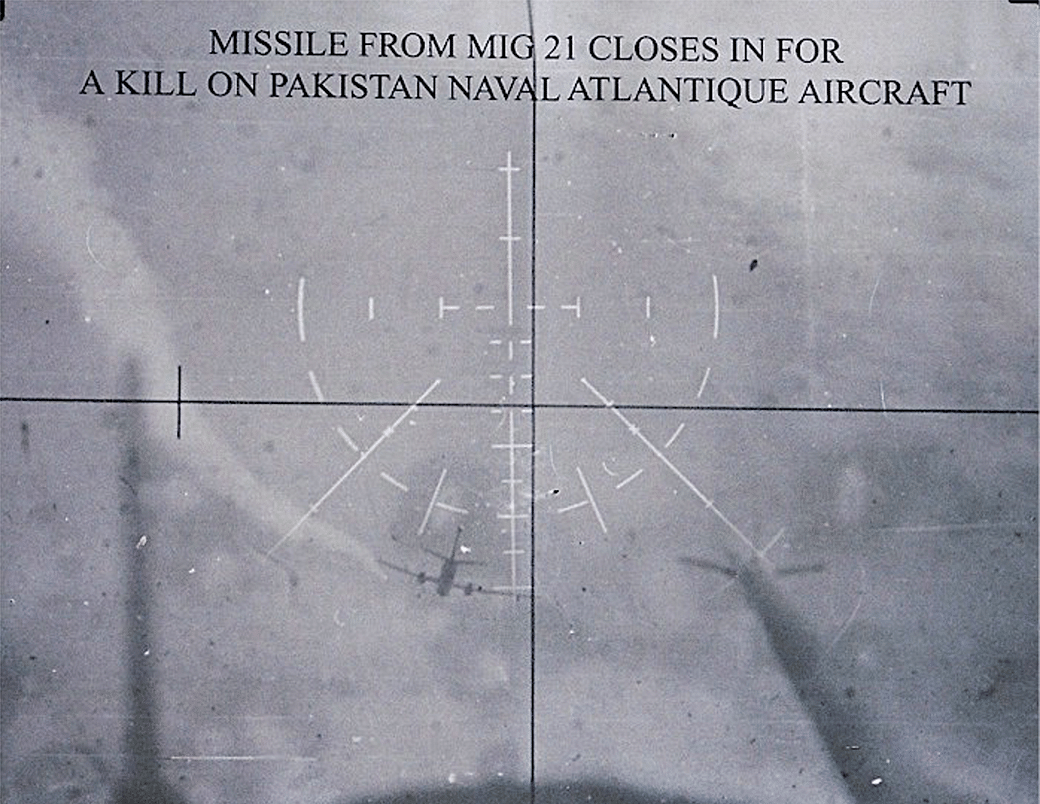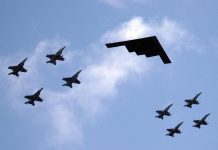The Soviet-era MiG-21 is the oldest-serving aircraft in the Indian Air Force arsenal. Since 1963, the MiG-21 has demonstrated its worth by providing critical air support, displaying its might against adversaries, and defending India’s skies.
However, aviation technology advanced significantly over time, leading to the need for upgrading the MiG-21. Although modern avionics and armaments were added to the MiG-21 through the Bison upgrade starting in 2001, the airframe remains decades old and cannot be continuously upgraded.
In particular, the safety of the MiG-21 aircraft has been a subject of debate due to numerous accidents over the years. These incidents have led to the aircraft being called the ‘flying coffin’ and ‘Widow Maker,’ reflecting concerns about its safety issues.
The MiG-21 aircraft has served as the backbone of the Indian Air Force (IAF) for a long time. After being introduced in the 1960s, over 870 MiG-21 fighters were acquired by the IAF to enhance its combat capabilities.
The aircraft’s safety record has been marred by approximately 400 crashes over the past six decades. Presently, the IAF operates three MiG-21 squadrons with around 50 aircraft.

The IAF has finalized a three-year timeline to phase out the remaining MiG-21 fighter squadrons to transition to more modern platforms.
How IAF MiG-21 Shot Down Pakistan’s Recon Aircraft
The MiG-21 played a significant role in neutralizing numerous threats from enemy nations throughout its extensive operational service. In the 1980s and 1990s, updated variants of the MiG-21 served as the backbone of the Indian Air Force’s (IAF) fleet.
Notably, the MiG-21BIS T-75 and the MiG-21 T-96 were extensively utilized during the Indo-Pakistan Kargil conflict in 1999. These aircraft carried out high-altitude rocket and bomb attacks against intruding Pakistan Army forces and conducted escort and combat air patrol (CAP) missions over the battlefield.
Just a month after the Kargil conflict, the MiG-21 proved its worth again when it intercepted a Pakistani aircraft, Flight Atlantic-91, reportedly intruding into Indian airspace.
On the morning of August 10, 1999, at precisely 10:51 am, the ground radars of the Indian Air Force (IAF) detected an aircraft on a specific flight path near Badin, a region located inside the Sindh province of Pakistan. Badin lies near the Indo-Pakistan international border (IB).
With its trajectory fixed on a south-easterly course, the aircraft was steadily approaching the IB between India and Pakistan. The IAF’s ground radar systems closely monitored its movement as it neared the border area.

The Pakistani aircraft then reportedly breached Indian airspace on two separate occasions and was alleged to have violated the 1991 air agreement between India and Pakistan.
According to the agreement, all aircraft (excluding helicopters) from both countries must maintain a minimum distance of 10 kilometers from the border.
In response, the Indian Air Force (IAF) quickly mobilized its MiG-21s. The aircraft were scrambled at 10:57 am and were airborne by 10:59 am.
At the time, Squadron Leader Prashant Bundela was piloting one of the MiG-21s deployed by the Indian Air Force (IAF). As the Indian Air Force pilot approached the alleged intruder aircraft, they could get close enough to confirm its identity visually. The intruder aircraft was identified as a French-built Atlantique with the Pakistan Navy insignia.
Following instructions from ground control, Squadron Leader Bundela flew alongside the Pakistani Navy aircraft, signaling its pilots to follow him and land. However, contrary to the instructions, Flight Atlantic-91 reportedly executed a maneuver perceived as threatening, turning towards Squadron Leader Bundela’s MiG-21.
Due to the Atlantique’s unauthorized entry into Indian territory, it was deemed a hostile aircraft and, therefore, not permitted to return to its point of origin. In such situations, two options are available for the intruding aircraft: either to comply with instructions and land or face the possibility of being shot down.
Allegedly, the Atlantique attempted to make a dash for the border. However, Squadron Leader Bundela received authorization to engage. At around 11:17 am, he fired an R-60 air-to-air missile, targeting the left engine of the Atlantique.
This incident occurred when the Pakistani aircraft was still approximately 5 kilometers south of the international border on the Indian side.

After being shot down, the wreckage of the Atlantique entered a spiral descent above the Kori Creek area. Some parts of the wreckage fell approximately 5 kilometers inside Pakistani territory.
The incident resulted in the loss of a significant military asset for Pakistan and the lives of 16 personnel onboard. The operation surrounding the Atlantique’s presence initially claimed to be a routine mission as the aircraft was unarmed, remains surrounded by controversy and uncertainty.
India questioned the proximity of the training mission near the international border, emphasizing that every country typically conducts training activities within designated areas well within their own territory.
Furthermore, Indian officials argued that the Atlantique’s primary operational zone is over the sea, suggesting that conducting a training flight inside foreign territory indicated a potential surveillance mission rather than a routine training exercise.
Pakistan filed a lawsuit against India at the International Court of Justice on September 21, 1999, seeking approximately $60 million in compensation. India’s attorney general argued that the court lacked jurisdiction, citing exemptions filed in 1974 and multilateral treaties.
On June 21, 2000, the court ruled with a 14-2 verdict that it had no jurisdiction in the matter, leading to a setback for Pakistan.
The ruling resulted in the abandonment of Pakistan’s claims without the option to appeal, incurring significant costs for the Pakistani government, which had spent around $400,000 in preparation for the case.
The incident propelled the two MiG-21 pilots to instant hero status in India. Squadron Leader Bundela, who later rose to the rank of Wing Commander, was recognized for his bravery with the prestigious Vayu Sena Medal on October 8, 2000.
Alongside him, Wing Commander VS Sharma, the flight controller who tracked the Atlantique and ordered the pilot to engage. Squadron Leader Pankaj Vishnoi, the helicopter pilot who retrieved debris from the border regions, also received the esteemed medal.
However, Squadron Leader Bundela’s journey took a tragic turn when he sustained severe injuries and was left paralyzed below the neck in a MiG-21 crash in April 2002. After four months of struggle in hospital, he died on 19 August 2002.
- Contact the author at ashishmichel(at)gmail.com
- Follow EurAsian Times on Google News




